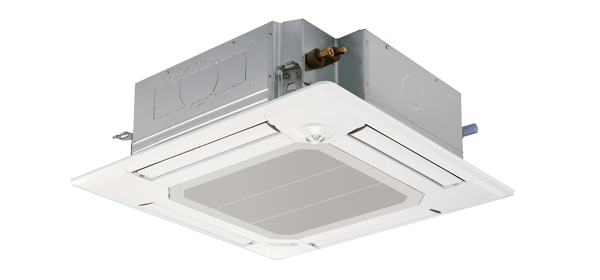With the recent influx in green multifamily residential projects coming down the pipeline, Lorax has seen a rise in sustainable strategies and technologies that are well-suited to residential projects. One of the technologies that has been on the rise is Variable Refrigerant Flow or VRF HVAC systems. As its name implies, VRF uses refrigerant as the heating and cooling medium and variable speed compressors. Weighing initial cost concerns, many of our clients recognized the benefits of VRF, especially in a multifamily residential application, outweighed any challenges.
Clients and building occupants have found that VRF systems improve the occupant experience and indoor environmental quality. VRF systems are much quieter than traditional HVAC systems, and therefore allow for better acoustical performance of the apartment space, making the residences more comfortable and effective in noise reduction from adjacencies.
Also, occupants feel more thermal comfort in residential units that utilize VRF since the system features several smaller air handlers that can be independently controlled and individualized. VRF is even compatible with modern thermal controls like programming using a mobile device – great for the residents in their 20’s or 30’s that make up the majority of rented apartments. Furthermore, the system works well in corridors and amenity spaces because it is able to heat and cool simultaneously; therefore providing consistent comfort across all room types and floors, and results in less temperature fluctuation.
Utility bills are lower in buildings with VRF systems than for residents in other buildings. VRF HVAC systems are energy-efficient because the variable-speed compressor runs only at the exact capacity needed for the current conditions, which means it runs less frequently and at a lower capacity. The systems are also designed to meet partial load conditions, rather than designed for rare peak heating and cooling conditions, which allows for significant energy savings
Impressively, the annual maintenance costs are low compared to water source heat pumps or four pipe fan coil units at only $0.60/SF, providing considerable operations savings.
Many designers also prefer VRF since it eliminates a lot of ductwork that many other HVAC systems require. The newly available space allows for the design of exciting occupant spaces like roof top amenities!
VRF seems too good to be true! So what could the hesitation be? VRF does have a marginally higher up front cost compared to some traditional HVAC systems. Especially in the realm of multifamily residential, where incentive for energy efficiency is split between the developer and the tenant. VRF HVAC systems also require experienced installers, which contribute to the higher upfront costs that VRF systems incur.

